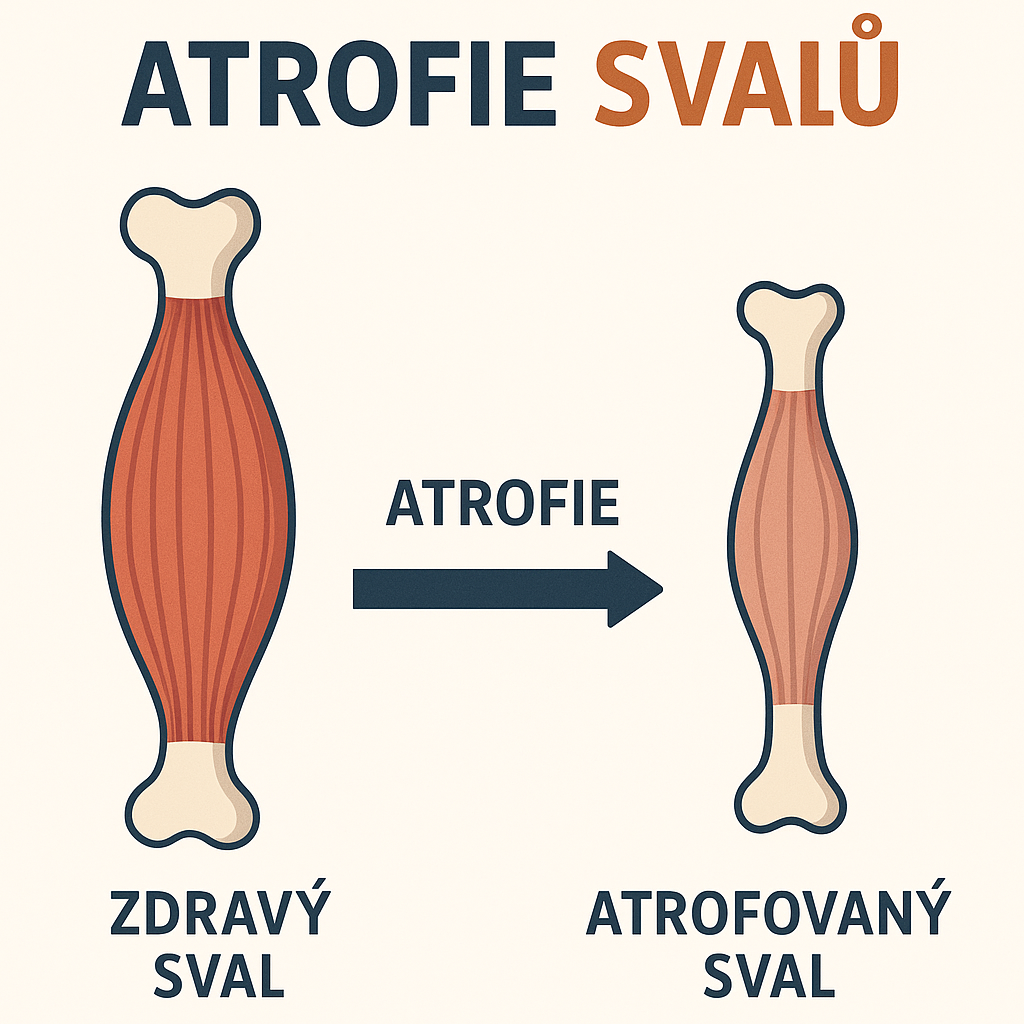
Muscles are like an engine – if you don’t use them, they start to weaken. This process is known as muscle atrophy, and it affects anyone who stops regularly loading and engaging their body. Whether due to injury, a sedentary lifestyle, aging, or poor nutrition – muscle mass can decline faster than we expect.
Muscle atrophy means loss of muscle mass – muscles shrink, weaken, and lose their function. There are two main types:
As a personal trainer and nutrition coach, I see every day how powerful prevention can be. These are the key pillars:
Strength training is the most effective way to maintain (or rebuild) muscle mass. It doesn’t have to mean lifting heavy in a gym – bodyweight exercises, resistance bands, or simple tools like kettlebells can be highly effective.
Running is not enough to prevent muscle atrophy.
While running improves cardiovascular health, endurance, and fat burning, it doesn’t sufficiently stimulate muscle growth, especially in the upper body.
In fact, people who run a lot without incorporating strength training may paradoxically lose muscle mass, especially if they consume too little protein or remain in a long-term calorie deficit.
Consistent training is essential for all age groups – and the older we get, the more important it becomes.
With age, natural muscle loss (called sarcopenia) progresses faster. Without resistance training, this decline accelerates. Ironically, it’s seniors who should prioritize strength training the most – not just for muscle health, but for bone strength, balance, fall prevention, and quality of life.
This is not about chasing personal records – the key is consistency and a training plan tailored to the individual’s condition, age, health status, and goals.
Stretching, light activity, physiotherapy, and quality sleep all help muscles recover and maintain their function. Recovery is a key part of long-term prevention.
Motivation, visualization, and mind-body connection matter. Especially for people recovering from injury, mental state is crucial. Even a “sleeping” muscle can be reactivated – when the mind and body work together.
Muscle atrophy is not “the end” – it’s a signal from your body that something needs to change. Whether you’re an athlete after injury, an older adult, or someone who simply wants to stay fit as they age – an active lifestyle, targeted training, and proper nutrition are the way forward.
If you feel like you’re losing strength, dropping weight, or don’t know where to start with training – get in touch. Together, we’ll find a path back to a strong, functional body.
Vladimir Veverka
Personal trainer and nutrition consultant
Vladimír Veverka
Xplore Fitness
Na Příkopě 17/1047
Prague 1